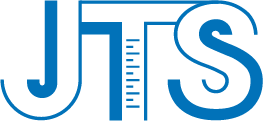Restricted substance testingProduct
Your Location:Home > Restricted substance testingLead and its compounds are subject to strict controls due to their toxicity, particularly the developmental neurotoxicity. The restrictions on lead (CAS: 7439-92-1, EC: 231-100-4) under REACH Annex XVII are primarily stipulated in Entry 63, with linkages to other entries. The restriction conditions are as follows:
1. Jewellery articles, or individual parts thereof, shall not be placed on the market or used if the lead concentration is equal to or greater than 0.05% by weight of any such part.
2. For the purposes of point 1:
(a) 'Jewellery articles' includes jewellery and imitation jewellery articles and hair accessories, comprising:
(i) Bracelets, necklaces and rings;
(ii) Precious jewellery;
(iii) Wristwatches and wristwear;
(iv) Brooches and pendants.
(b) 'Any such part' shall include the constituent materials of the jewellery and any individual part of a jewellery article.
3. Point 1 shall also apply to individual parts placed on the market or used in the manufacture of jewellery.
4. By way of exemption, point 1 shall not apply to:
(a) Crystal glass as defined in categories 1, 2, 3 and 4 of Annex I to Council Directive 69/493/EEC;
(b) Internal, non-accessible components of watches;
(c) Non-synthetic or reconstructed precious and semi-precious stones (CN code 7103, Regulation (EEC) No 2658/87), unless they have been treated with lead or lead compounds or mixtures containing these substances;
(d) Enamels, defined as vitreous mixtures obtained by fusion, vitrification or sintering of minerals at temperatures of at least 500 °C.
5. By way of exemption, point 1 shall not apply to jewellery articles first placed on the market before 9 October 2013, or to articles of jewellery manufactured before 10 December 1961.
6. By 9 October 2017, the Commission shall re-evaluate the exemption in point 1, considering new scientific information on the migration of lead from available alternative materials and, if appropriate, amend it accordingly.
7. Articles or accessible parts thereof, which, under normal or reasonably foreseeable conditions of use, can be placed in the mouth by children and whose lead content is equal to or greater than 0.05% by weight, shall not be placed on the market or used.
This restriction does not apply if the lead release rate from such an article or accessible part, coated or uncoated, does not exceed 0.05 μg/cm²/h (equivalent to 0.05 μg/g/h); and for coated articles, the coating is sufficient to ensure that this release rate is not exceeded for at least two years of normal or reasonably foreseeable use.
For the purpose of this point, an article or accessible part is considered likely to be placed in the mouth if any of its dimensions is less than 5 cm, or it has a detachable or protruding part of less than 5 cm.
8. By way of exemption, point 7 shall not apply to:
(a) Jewellery covered by point 1;
(b) Crystal glass as defined in categories 1, 2, 3 and 4 of Annex I to Directive 69/493/EEC;
(c) Non-synthetic or reconstructed precious or semi-precious stones (CN code 7103, Regulation (EEC) No 2658/87), unless treated with lead or its compounds or mixtures containing such substances;
(d) Enamels, defined as vitreous mixtures obtained by fusion, vitrification or sintering of minerals at temperatures of at least 500 °C;
(e) Keys, locks, including padlocks;
(f) Musical instruments;
(g) Articles made wholly or partly of brass alloy, provided the lead concentration in the brass alloy part is ≤ 0.5%;
(h) Writing tips of writing instruments;
(i) Religious articles;
(j) Portable zinc-carbon batteries and button cells;
(k) Articles falling within the scope of:
(i) Directive 94/62/EC;
(ii) Regulation (EC) No 1935/2004;
(iii) Directive 2009/48/EC;
(iv) Directive 2011/65/EU.
9. By 1 July 2019, the Commission shall re-evaluate point 7 and points 8(e), (f), (i) and (j).
10. Point 7 shall not apply to articles first placed on the market before 1 June 2016.
11. From 15 February 2023, the following shall be prohibited in or within 100 metres of wetlands:
(a) Discharging lead shots with a lead concentration equal to or greater than 1% by weight of metal;
(b) Carrying such lead shots during shooting activities in or within 100 metres of wetlands.
For point 1:
(a) 'Within 100 metres of a wetland' means the area extending 100 metres outwards from any point on the wetland's boundary.
(b) 'Shooting in wetlands' means shooting conducted in or within 100 metres of a wetland.
(c) A person found carrying lead shots in or within 100 metres of a wetland during a shooting activity is presumed to be shooting in the wetland, unless evidence suggests otherwise.
This point shall not apply to Member States that have notified the Commission under point 12 of their intention to apply the restriction therein.
12. Member States where wetlands cover 20% or more of their territory may opt to prohibit the following throughout their territory from 15 February 2024, instead of the restriction in point 11(1):
(a) Placing on the market lead shots with a lead concentration equal to or greater than 1% by weight of metal;
(b) Discharging such lead shots;
(c) Carrying such lead shots during shooting activities.
Member States intending to apply this paragraph shall notify the Commission by 15 August 2021 and inform it of the measures taken by 15 August 2023. The Commission shall make these notifications public.
13. For the purposes of points 11 and 12:
(a) 'Wetland' means areas of marsh, fen, peatland or water, whether natural or artificial, permanent or temporary, with water that is static or flowing, fresh, brackish or salt, including areas of marine water the depth of which at low tide does not exceed six metres.
(b) 'Lead shot' means a projectile or projectiles in a cartridge intended for use in a smoothbore gun.
(c) 'Smoothbore gun' means a gun with a smooth bore, excluding air guns.
(d) 'Shooting' means discharging a smoothbore gun.
(e) 'Carrying' means carrying on one's person or transporting by other means.
(f) In determining whether a person is carrying lead shots during a shooting activity:
(i) All circumstances of the case shall be considered;
(ii) The person carrying the lead shots and the person shooting need not be the same.
14. Member States which, by 15 February 2021, had national measures restricting lead in shot to protect the environment and human health that are stricter than the restrictions in point 11 may maintain them. They shall notify the Commission of these measures, which will be made public.
15. Vinyl chloride polymer or copolymer (PVC) articles shall not be placed on the market or used if the lead concentration is equal to or greater than 0.1% by weight of the PVC material.
16. Point 15 shall apply from 29 November 2024.
17. By way of exemption, point 15 shall not apply to PVC articles containing recovered flexible PVC until 28 May 2025.
18. By way of exemption, point 15 shall not apply until 28 May 2033 to the following PVC articles containing recovered rigid PVC, provided the lead concentration in the recovered rigid PVC is below 1.5% by weight:
(a) Profiles and sheets for external applications in building and civil engineering, excluding decking and terraces;
(b) Profiles and sheets for decking and terraces, provided the recovered PVC is used only in the middle layer, completely covered by a layer of PVC or other material with a lead concentration below 0.1% by weight;
(c) Profiles and sheets for use in concealed spaces or cavities in building and civil engineering (not accessible during normal use excluding maintenance, e.g., cable ducts);
(d) Profiles and sheets for interior building applications, provided the entire surface of the profile or sheet facing the occupied building area is produced using PVC or other material with a lead concentration below 0.1% by weight after installation;
(e) Multilayer pipes (excluding pipes for drinking water), provided the recovered PVC is used only in the middle layer, completely covered by a layer of PVC or other material with a lead concentration below 0.1% by weight;
(f) Fittings, excluding fittings for drinking water pipes.
From 28 May 2026, recovered rigid PVC from articles falling under points (a) to (d) shall only be used to manufacture new articles of any of those categories.
Suppliers of PVC articles containing recovered rigid PVC with a lead concentration equal to or greater than 0.1% by weight of the PVC material shall, before placing them on the market, ensure they are marked with the statement: "Contains lead ≥0.1%", visibly, legibly and indelibly. Where this is not possible due to the nature of the article, the marking shall be on the packaging.
Suppliers shall provide written evidence demonstrating the claim about the source of recovered PVC upon request by national authorities. Certificates from schemes ensuring traceability and recycled content, e.g., based on EN 15343:2007, can be used. For imported articles, claims shall be supported by an independent third-party certificate.
By 28 May 2028, the Commission shall review this point based on new scientific information and amend it if appropriate.
19. By way of exemption, point 15 shall not apply to:
(a) PVC-silica separators in lead-acid batteries, exempted until 28 May 2033;
(b) Articles covered by point 1 which are exempt under points 2 to 5, and articles covered by point 7 which are exempt under points 8 and 10;
(c) Articles falling within the scope of:
(i) Regulation (EC) No 1935/2004 on food contact materials;
(ii) Directive 2011/65/EU (RoHS);
(iii) Directive 94/62/EC on packaging;(iv) Directive 2009/48/EC on toy safety.
20. By way of exemption, point 15 shall not apply to PVC articles placed on the market before 28 November 2024.
J-Testing is a CNAS, CMA, and CPSIA accredited laboratory, committed to providing global clients with professional third-party testing, consulting services, and cross-border certification assistance.






 Our Service
Our Service
